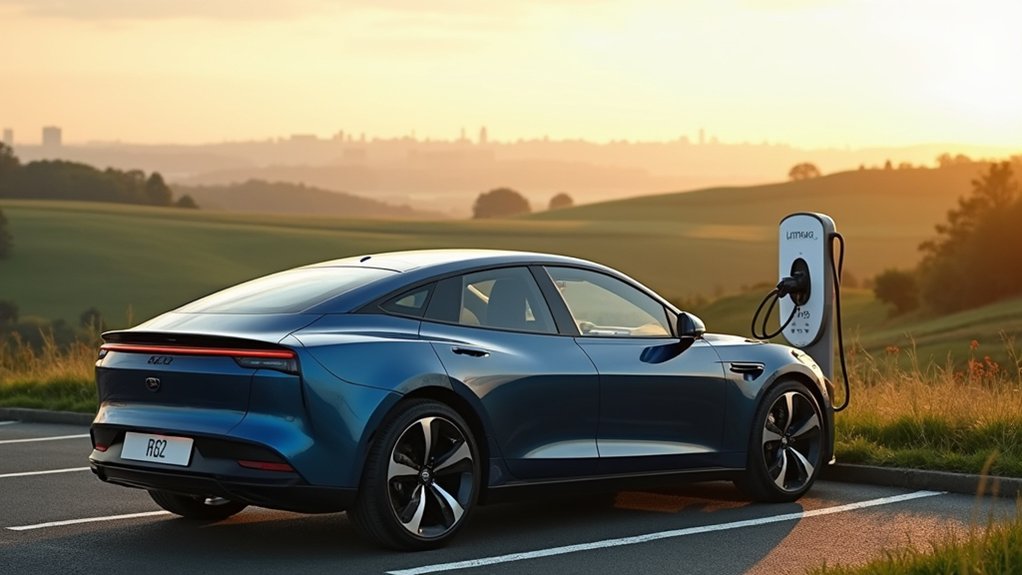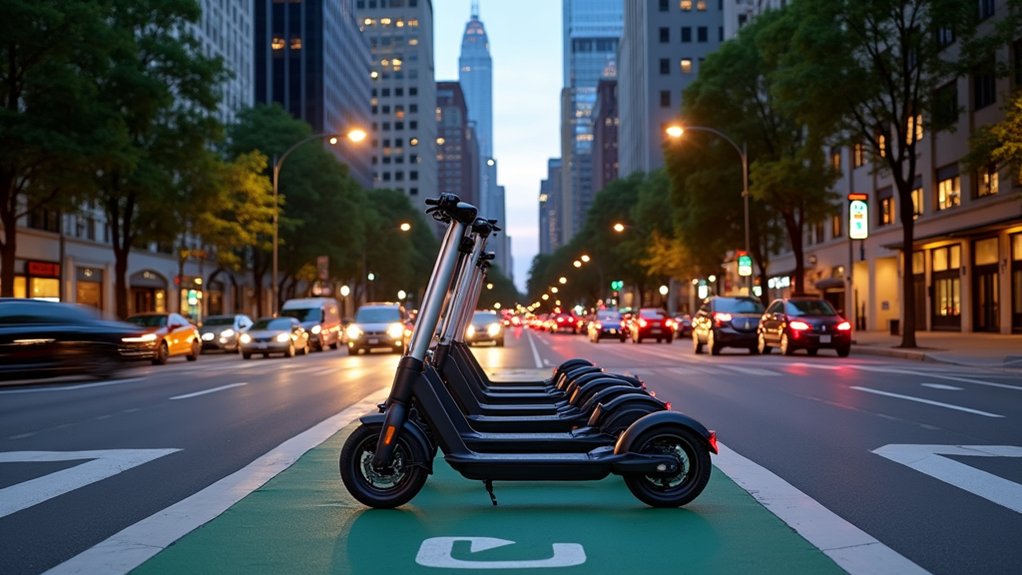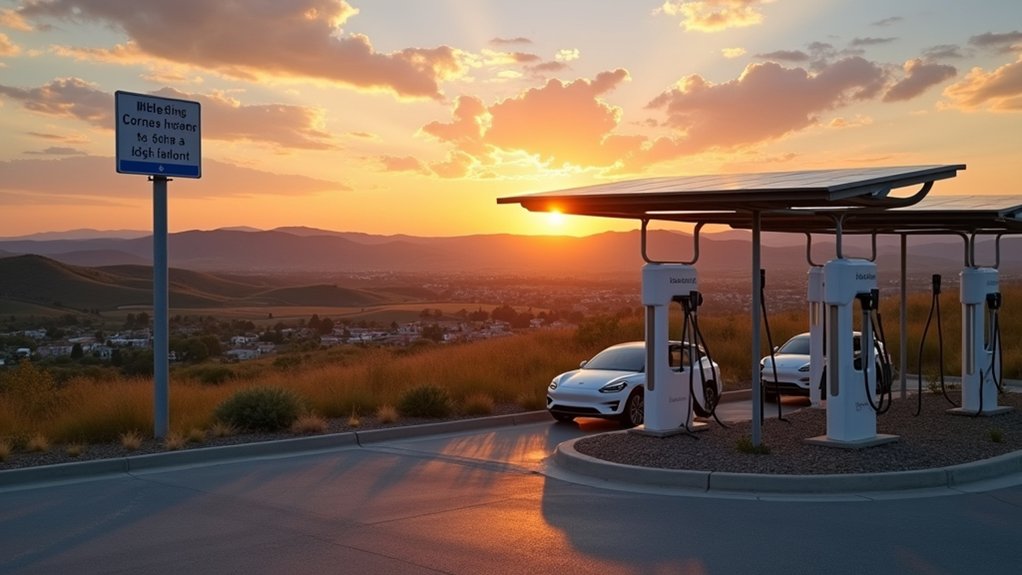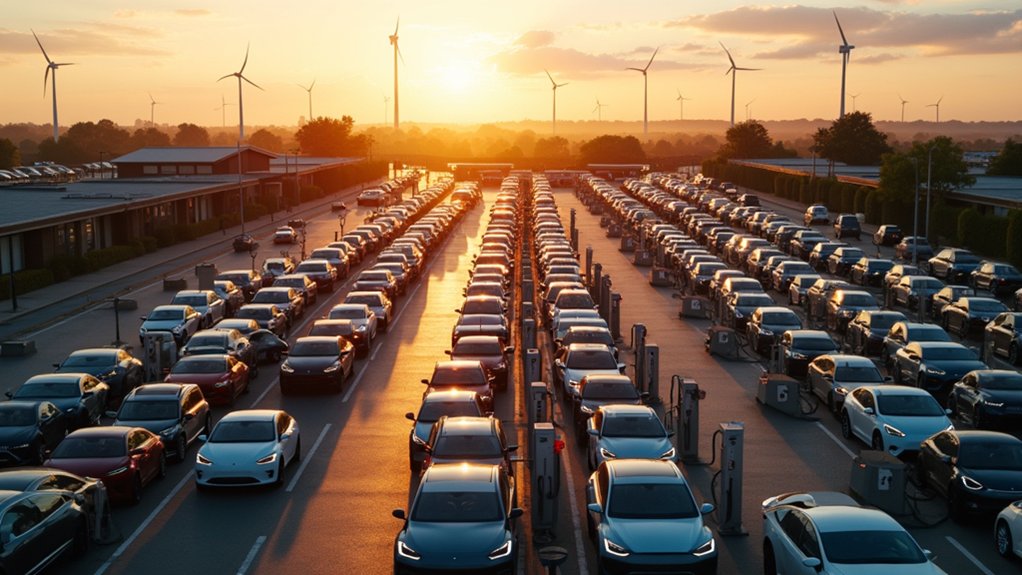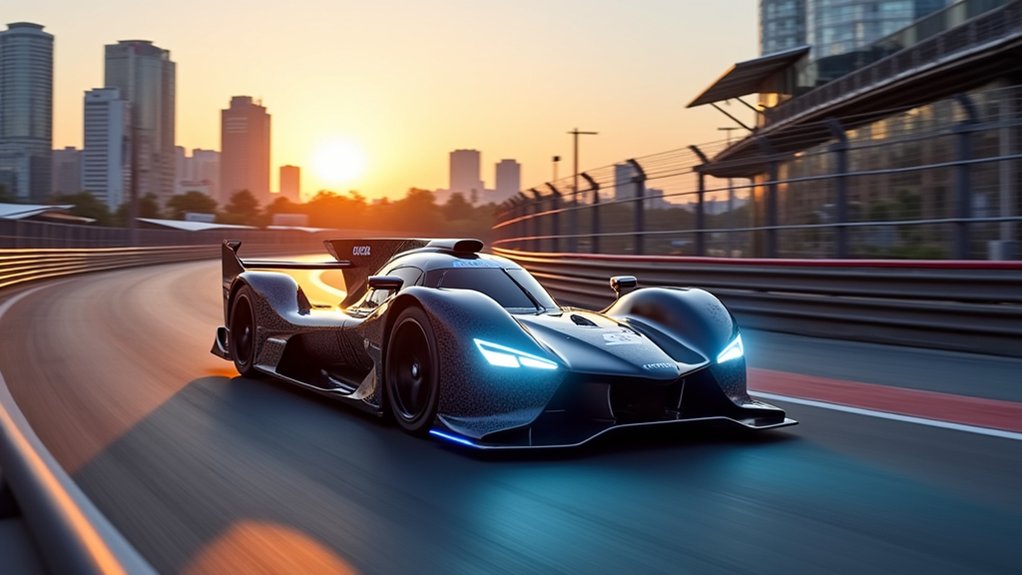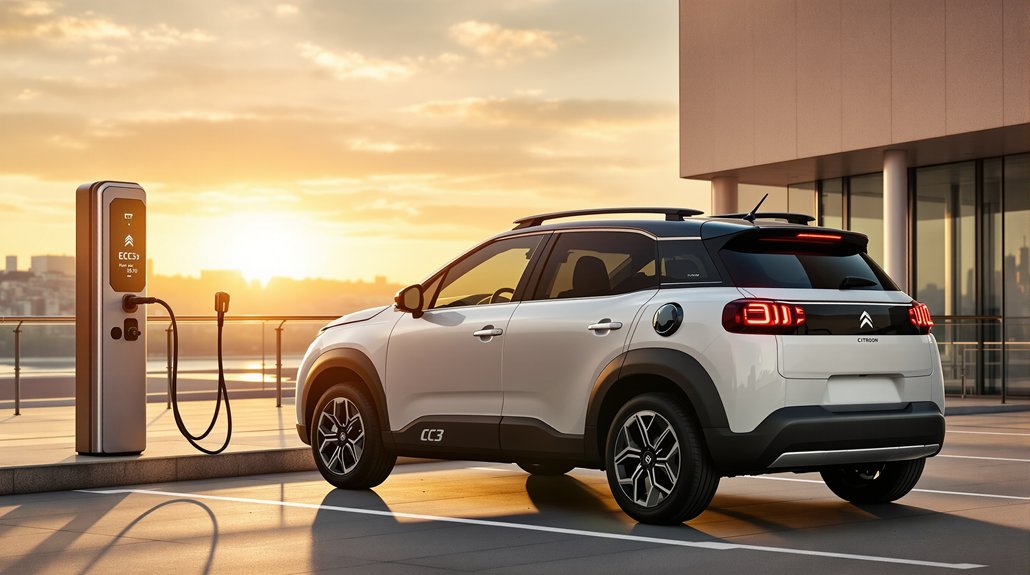The UK electric vehicle market achieved remarkable growth in 2024, with 381,970 new registrations representing 19.6% of total car sales. This surge outpaces the EU average of 15.2% and corresponds with a 45% increase in public charging infrastructure since 2023. While initial purchase costs remain higher, competitive total ownership expenses and government incentives drive adoption. Modern EVs now deliver impressive performance, with some models achieving 452-mile range. The electric revolution continues to accelerate across Britain’s automotive landscape.

While electric vehicles have steadily gained prominence across Europe, the United Kingdom has emerged as a particularly strong market with record-breaking sales of 381,970 electric cars in 2024. This impressive figure represents 19.6% of new car registrations, positioning the UK ahead of the broader EU market, where battery-electric vehicles captured 15.2% of total sales in early 2025.
The expansion of charging infrastructure has played an essential role in this growth, with rapid and ultra-rapid public charging devices increasing by 45% since May 2023. Greater London leads this transformation with 22,211 charging stations, though rural areas continue to face infrastructure challenges. Chinese automakers have significantly influenced the global EV landscape by introducing innovative charging solutions and competitive pricing strategies.
Modern charging capabilities now enable drivers to add 100 miles of range in just 35 minutes using 50kW rapid chargers, while standard 7kW units provide full charges overnight. The Electric Vehicle Homecharge Scheme continues to provide crucial support for residential charging installations.
Today’s EV charging technology delivers quick range boosts for drivers on the go, while convenient overnight charging handles longer refills.
Economic factors have begun shifting in favor of electric adoption, with one-fifth of BEV models now priced below their petrol or diesel counterparts. While initial purchase costs remain higher, the combination of lower maintenance requirements, reduced fuel expenses, and government incentives makes the total ownership cost increasingly competitive. The transition from traditional vehicles is evident as petrol and diesel cars now represent only 38.8% of the EU market.
The market has responded positively to these developments, contributing to the global success of models like the Tesla Model Y, which dominated worldwide sales with 1.2 million units in 2023.
Performance metrics continue to impress, with electric vehicles consistently outperforming traditional combustion engines in acceleration and energy efficiency. The Mercedes-Benz EQS exemplifies these advances, achieving an industry-leading range of 452 miles on a single charge.
Superior torque delivery and responsive power management have made EVs increasingly attractive to performance enthusiasts.
The environmental benefits of this shift are substantial, as increased EV adoption directly contributes to reduced urban air pollution and lower carbon emissions.
However, challenges remain, particularly regarding power grid capacity and the need for enhanced rural charging infrastructure. The industry continues to address these issues while improving battery recycling processes and exploring alternative technologies like hydrogen fuel cells.
Frequently Asked Questions
What Happens to Electric Car Batteries at the End of Their Lifespan?
Electric car batteries typically follow two main paths at end-of-life: recycling or repurposing.
While only 5% are currently recycled to recover valuable materials like lithium and cobalt, many batteries retain 70-80% capacity for second-life applications. These can be repurposed for residential energy storage or grid stabilization.
Unfortunately, most batteries still end up in landfills, posing environmental risks through chemical leaching into ecosystems.
How Does Extreme Cold Weather Affect Electric Vehicle Performance and Range?
Cold weather considerably impacts EV performance by reducing battery efficiency up to 30-33% below 15°C.
Chemical reactions within lithium-ion cells slow down, increasing internal resistance and charging times.
Additional energy demands from cabin heating, defrosting, and heated seats further diminish range.
While thermal management systems help mitigate these effects, winter driving requires careful planning around shortened range and increased power consumption.
Can I Install a Home Charging Point if I Live in a Flat?
Installing a home charging point in a flat depends on several key factors: ownership status, dedicated parking availability, and freeholder permission.
Flat owners with allocated parking can apply for the Electric Vehicle Chargepoint Grant, covering up to £350 of installation costs.
Renters must obtain landlord consent.
For residents without off-street parking, alternatives include public charging networks, workplace facilities, or petitioning local authorities for on-street charging points.
Are There Any Special Insurance Requirements for Electric Vehicles in the UK?
While electric vehicles don’t require fundamentally different insurance than conventional cars in the UK, several unique aspects need consideration.
Specialist policies often include coverage for charging equipment, battery leasing arrangements, and software updates. Most insurers now offer EV-specific additions to standard policies, covering specialized components and charging-related incidents.
Premiums may be higher due to repair costs, though some insurers offer green vehicle discounts.
What Impact Do Electric Cars Have on the National Power Grid?
Electric vehicles greatly impact the national power grid through increased electricity demand, with each charging session equivalent to adding another household’s consumption.
Smart charging technologies help manage this load, potentially reducing peak demand by 60% by 2050.
The integration of 300MW from EV systems into Britain’s energy toolkit demonstrates the grid’s adaptation, while vehicle-to-grid technology allows EVs to serve as distributed storage units during high-demand periods.
